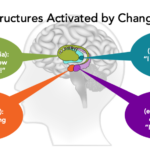This website uses cookies so that we can provide you with the best user experience possible. Cookie information is stored in your browser and performs functions such as recognising you when you return to our website and helping our team to understand which sections of the website you find most interesting and useful.
4 Factors of Successful Change Leaders

Photo by Obi Onyeador on Unsplash
Change comes in all kinds of forms, from the small and annoying to a global pandemic. Any imposed change compels us to act, whether we want to or not. But in which directions will change move us? Today's change leaders are called to unprecedented responsibility in response to fatigued teams and shattered norms. How do you manage your team through such change? Where do you need support? Because change will continue until new norms are established, handling the crisis is an ongoing challenge. Many are drawing on principles in change models to help guide them. Change Quest is based on the neuroscience of change, and maps disruption and employee motivation as well as offering tools for guidance.
The neuroscience of change is helpful in understanding what happens to us, biologically, when we go through change. Further, we can assess the impact of change by observing how long it takes to get acclimated to the new normal and how much disruption it creates in our daily lives.
The Brain During Change
Several brain structures can get activated by change. And I see all of them happening to us now. The amygdala sees change as threatening and tends to respond with fear and anxiety. That's certainly happening to me. Check. The entorhinal cortex creates mental maps of our physical spaces and social networks, and if change impacts either or both of those, it has to do some heavy lifting. That's happening too - Check. The basal ganglia turns repeated behaviors into habits that we can automatically do without thinking. Some changes require us to not only develop new habits that are awkward and uncomfortable at first, but also require us to leave behind well-grooved and easy habits. Feeling this too - Check. And we can also experience change fatigue when change is coming faster than our ability to adjust. Absolutely - Check.
How to Support Your Brain
When it comes to triggers affecting work and adapting to change, the COVID-19 crisis is hitting every one. If you're a manager or change leader, you play a critical role during this massive shift. Work with your teams to calm the amygdala's fear and anxiety trigger. Communicate often, being as transparent as you can. In the absence of information, the brain is designed to fill in the worst case scenario so provide the information you have, again and again, exuding as much calmness as you can muster. Help the entorhinal cortex settle in as your employees are dealing with newly reshaped work settings. Support them by encouraging them to set up a working area at home and help people stay connected to their colleagues through video-based "coffee breaks" or lunch dates. People need to stay connected to the relationships that matter and not just in back-to-back meetings. On that note, don't schedule back-to-back meetings. Give people 10-15 minute breaks between them because video conferencing takes its own kind of concentration that is exceptionally tiring in long stretches, not to mention the strain it puts on the body. In terms of the basal ganglia, all of us are learning new habits so give employees time and space to develop them. It takes, on average, 40-50 repetitions of a new behavior for the basal ganglia to turn it into a habit that we don't have to think about. Until then, we can make mistakes and get frustrated with being awkward at something. You can help by guiding people through using the new tools and methods, expecting some errors as people learn, and making it safe to ask questions. You can have a huge impact by acknowledging effort and progress. Right now, every small success matters. And when change fatigue hits, call on the best in yourself and your team, to take breaks, help each other out, and remember that it won't feel new forever.
How Change Quest® Can Help Change Leaders
As adaptation continues, and new norms settle in, Change Quest can help you mount successful, smaller, but still crucial changes within the broader circumstance. From the various change initiatives I have witnessed in my years of consulting, four factors consistently influence outcomes. The first two: 1. Disruption: How much disruption does the change create for employees? 2. Acclimation: What is the time it takes to acclimate or get used to the change? On a regular day, these two factors allow us to plot the impact of different types of changes into quadrants. For instance, changes that are low disruption and require a low amount of acclimation time fall into the bottom-left zone (green): changes that are easy to adjust to quickly. The upper-right zone (red) represents changes that are high in disruption and time to acclimation. This is the zone nearly all of us are inhabiting in response to the global COVID-19 outbreak or any change that requires a lot of effort over a long time including mergers and acquisitions or launching a new product, and on the home front, remodeling your home, or dealing with a long illness and/or death. Use this matrix to consider the impact proposed changes will have on your employees. It's a good predictor of how much resistance and upset a change is likely to cause. Right now, everyone is pretty maxed out just managing the day to day shifts so if you can, postpone or revise other changes that your organization was planning to launch in the next few months. In addition, there are two more factors that mark how employees respond to change, significant because they shape key psychological aspects of how humans are wired. 3. Individual choice: Do the employees choose the change or will it be put upon them? 4. Desire: How much do the employees want the change, or again, is it being put upon them?
Mapping Motivation for Change Leaders
Choice and desire impact our emotions, attitudes, and motivations. It's easier for people to get onboard with changes that they choose or want, even when the change represents more disruption or longer acclimation time. Again, these two factors can be mapped against each other as a grid against "yes" or "no" for both choice and desire. Using both matrices is recommended, to really assess the impact of a change. When people both desire and choose a change (yes and yes), they are likely to be happy about it and experience it with enthusiasm and energy. Their motivation looks like they're running toward it and celebrating the win. If a person really wants a change that they did not choose, they're likely to see it as an unexpected but good opportunity. Motivation is more like walking toward it, feeling good about embracing it. A change that is not wanted but is chosen - is tricky and usually represents some kind of "should" or intentional sacrifice, like accepting a lower position rather than being laid off. It might feel like trudging along and often includes feelings of resentment or disappointment. Social distancing and sheltering at home are examples of this kind - we're not excited about it but we're doing it for the good of our neighbors, family members, and healthcare workers. Collectively, we are trying to make the best of it during these trying times. Finally, changes that people did not choose nor want. Obviously, without natural motivation people feel a lot of resistance toward this imposition, perhaps needing others to push or drag them along. Depending on how badly people feel about it, they might even actively fight the change, digging in their heels. We can agree that people did not choose nor did they want this global pandemic (no and no), which means we are more likely to resist this upheaval, and find it more difficult to lean in to what is being asked of us. And yet we will. While humans are wired to resist change, we are also incredibly adaptive. We're already adapting. You can see examples everywhere - people of all ages are practicing new kinds of hygiene and social distancing, medical professionals are innovating solutions while fighting for lives on an hourly basis, and leaders are making rapid decisions and taking unprecedented actions.
How Change Leaders Manage a Crisis
As a manager or change leader, it's important to take all these factors into account when considering how to best support your employees, customers, and communities. Every single person on the planet is now dealing with the stress of these difficult changes that we did not choose nor want. Some are navigating the fear of the disease itself, caring for loved ones or dealing with terrible loss. Some are suddenly unemployed and are struggling to find the basics of food and shelter. Some are homeschooling their children while learning how to work from home. Here are some strategies you can use to help take care of your people:
1. Dial Down your Expectations
First, dial down your expectations. People are anxious and exhausted. This means that people are not going to be as effective or productive as they usually are. When issues of survival are triggered, the reptilian brain takes over, which makes it harder for people to access their higher order thinking skills like logical analysis and creativity. People are going to be more easily annoyed and triggered, so you will likely see more conflict. Help them by taking off some of the pressure. Don't expect people to produce at the same level as before. Focus in on the most critical elements and let the other stuff slide for a bit. Push out deadlines, reduce bureaucracy, make meetings shorter, and create more breaks.
2. Have Patience and Compassion
Second, have patience and compassion. As a manager or leader, you play a central role in the "tone" of how people see and experience what is happening around them. When people are under stress, they have higher needs for information and communication. You will likely find yourself answering the same questions over and over. Breathe and answer them again. You will also be dealing with people's emotions on a daily basis, especially since people are struggling with the adjustment to this new, and ever changing situation. When people are sad or angry or scared, just breathe. And connect with them on a human level. You don't have to have all the answers for someone to feel seen and heard. In fact, Dr. Brené Brown says "The two most powerful words when we're in struggle are, 'me too.'"
3. Increase Self-Care
Third, dial up your own self care and encourage others to do the same. During times of stress, we need self care more than ever. Make sure you are getting enough sleep, eating nutritious foods, and moving your body. Limit how you watch the news since it can trigger our amygdala and fight/flight/freeze response. If you can, try doing a mindfulness practice like meditation or yoga. And allow yourself to relax too. Whether it's reading, binge watching shows, or some other activity, it's important to take a break from all the intensity of what is happening. You need to be in good shape to help others so by doing that for yourself first, you will have more patience and compassion to share. And you give others permission to take care of themselves too. Leaders at every level play a central and very powerful role in how we each respond to and move through change. By the time this crisis is over, we will have seen several examples of leaders who provided extraordinary guidance, and others who unwittingly did unfortunate damage. Learn more about the Change Quest® model.
Related Blogs
JOIN OUR COMMUNITY
Be the first to know of Dr. Britt Andreatta's latest news and research.






